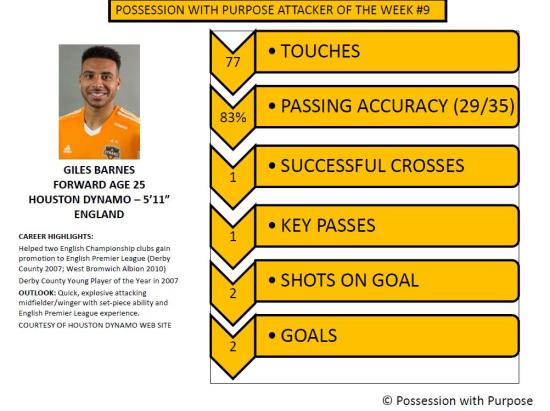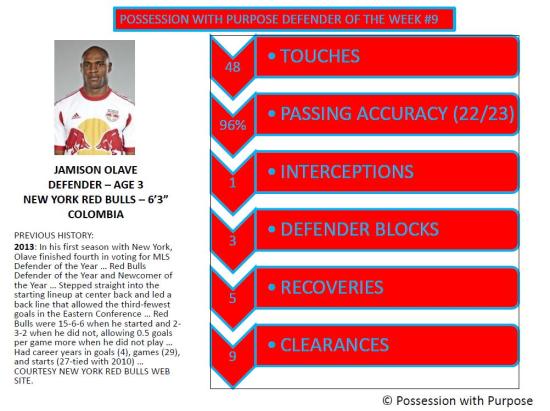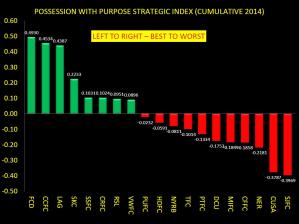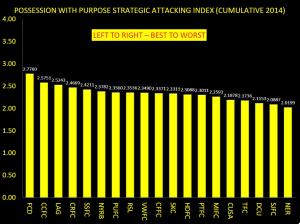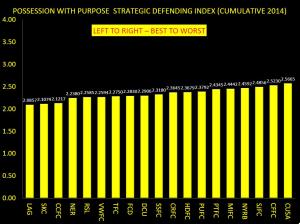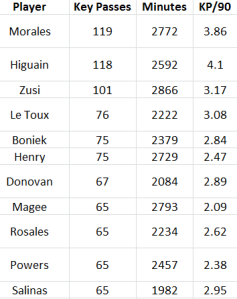Player Acquisition: The Tweeners
/There is a thing that constantly steals my interest when it comes Major League Soccer. It's how teams choose to scout and evaluate talent that is already in the league. One thing that has been made quite clear with the financial constraints is that it is difficult to hold on to those players that hover around the $200,000 salary threshold, and yet aren't stars or obviously consistent difference makers. Player makers such as Chris Rolfe, Mauro Rosales and Bobby Convey have found new homes in MLS, either in the few months leading up to this season or since the first kick. The names themselves aren't specific references of importance, but rather examples of what happens in the off-season concerning players in the aforementioned pay range that are just casualties of cap situations in today's era.
These players we understand to a degree. They are interesting talents with a fair amount of room for critiquing, whether that be due to personality, problems with injuries or just inconsistent displays of performance from week to week. There are always one or two or even three (in this case) of these players that are available come the off-season.
Two of the three players went to clubs with the ability to take chances.
Chivas USA was obviously getting a steal in adding Rosales. Super Mauro, since being added to the roster, has accrued 17 key passes and 3 assists while producing 12 shots on his own. He leads the club in Total Shots Created.
DC United needed anything to help save their season and jump start their offense. The arrival of Rolfe in return for a bit of allocation money was seemingly a worthwhile risk--and his influence on Ben Olsen's chances of keeping the head coaching job can probably be debated to some extent. Prior to the trade, Olsen and DC United had only produced 1 point through 3 matches. Since the addition of Rolfe, they're now rolling at nearly 2 points per match.
Now, I'm not saying that Rolfe is truly responsible for the turn around. That idea would represent lazy analysis. In fact, DC United generated 34 shot attempts to its opponents' 36 in the first three games, and 108 to 112 since, so it's not like Rolfe's presence has indicated a stable improvement yet. Frankly, since MLS week 4, it's been the Fabian Espindola show at RFK, and that is a completely different discussion.
On to Convey, who didn't go to a team that had to take on a lot of risk. Instead he went to the defending Supporters' Shield-winning New York Red Bulls. He has been somewhat of middling attacking influence in his time on the pitch for the Bulls, adding 9 key passes and 2 shots in just under 700 minutes over his initial tenure this season.
WhoScored isn't exactly impressed. They have graded his performance so far by issuing him a 6.39 rating which is well below their league average rating for a player---which sits near 6.7. Squawka ranks him 16th on the roster depth chart which mostly follows up that thinking being that WhoScored placed him 15th overall.
These three players represent teams that have taken advantage of a system available to them in an effort to improve their club. What is intriguing to me at this juncture isn't necessarily the impact they've made upon their current club but how their current clubs targeted them as being upgrades and financially worth their investments.
I'm sure that MLS teams have personnel that help front office types make decisions and help discern player talent and ability that make them right for the acquisition. I am familiar enough with certain clubs to be aware of the individuals that are involved in that process, and much of it seems archaic and awkward in method.
Mauro Rosales may have been less of a risk when it comes to Chivas. In fact it was kind of "duh" type moment that perfectly fell in their lap. The other side of the coin is that Rolfe and Convey were both risks, and heavy ones at that considering their price tags (before New York lapped Convey up, that is).
I would certainly concede that all are substantial talents within the US first division. But how they fit the rosters to which they were added to is a bit interesting.
Some could point to Convey's addition to New York as an attempt to add competition to the left side and some wide play making, Convey has instead shifted to the back line in the form of a full back. Which begs the question, was that the idea before he was added?
I, as well as many, had thought Luis Silva would be taking over the role of central play maker in Washington after the departure of Dwayne De Rosario. After the stumbles by Silva early on, I thought that Rolfe would take over that role, but instead he looks to be pushed out wide with Nick DeLeon, being featured more frequently in the central attacking role. Was this a decision made before acquiring him, and did the club think he could fill that role any better than some of the more natural wide midfielders who have moved clubs since?
Results-based analysis is often unhelpful, and in these cases, don't truly tell the story we're seeking in how MLS teams are valuing these types of players. I'm curious if there are any specific statistical values that teams could point to as to why they made this move--and please, I hope it's more than the assists or goals totals, or the fact that they're "winners." For all the talk about transparency in details for the league, it would be nice to see some of the true thought processes involved in analyzing these talents beyond tired cliches. Especially considering that all these clubs they have access to far better gauges and methods than what most of us have at our disposal.





